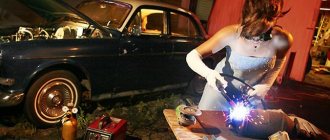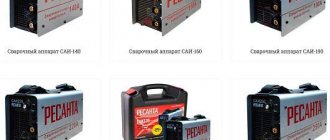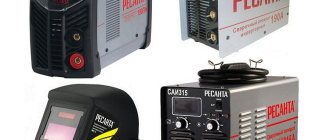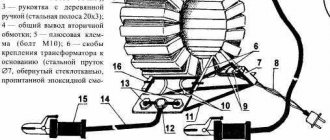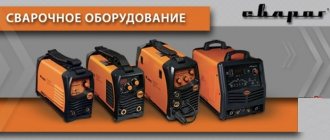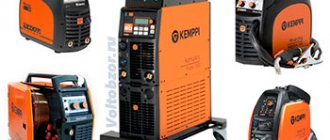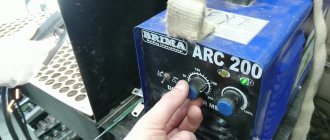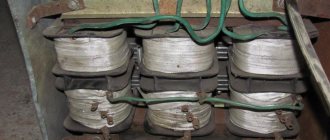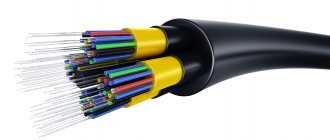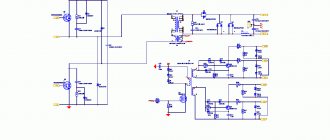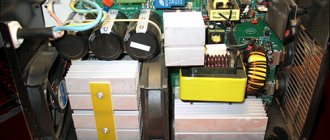Inverter welding machines are lightweight, portable, and compact, but at the same time, in terms of technical characteristics, they are in no way inferior to stationary transformer machines (and even, on the contrary, surpass them). In this regard, AIS began to gain more and more popularity, and, consequently, their production increased (for example, over 40 models were produced). The most popular welding machines are Resanta 190A and 190K - this article describes what the difference between them is and what is better to choose.
Criterias of choice
For home use, compact models can be considered; they are easy to carry and convenient to store.
When choosing a device, you should consider the required current strength. For example, for interaction with electrodes up to 4 mm in diameter, models with an indicator of 190 A are suitable.
Equipment with a diameter of 3 mm is suitable for devices with a current of 140 A. Devices of 220-250 A work with electrodes of 5-6 mm. In general, a value of 150 A is sufficient for domestic needs.
The voltage indicator when starting at idle determines the ease of use of the device. The higher it is, the better.
If there is a prospect of connecting the device to a low-voltage network (typical for rural areas), it is better to choose the “SAI PN” model. They will operate without problems at 140-160 volts.
Rating of units for manual arc welding (MMA)
This welding option is used for processing cast iron, ferrous metals and alloys. The disadvantage of the process is the low strength of the seam.
SAI-220
Advantages:
Flaws:
Reviews
| Oleg Bobrov | Ivan Savin |
| “I was pleased with the even arc burning and quick ignition. Welding is excellent, I used OK-46 and MP-3 electrodes. The downside is the short cable.” | “Budget-friendly, unpretentious unit. Operates for 8 hours without interruption, repairable. Not suitable for 5 mm electrodes, produces a limit of 170 A.” |
SAI-190K
A compact welding device assembled using modern technologies. Has anti-stick and hot start functions.
Advantages:
Flaws:
Reviews
| Vyacheslav Kolapaev | Semyon Ilyin |
| “I was assembling heating for greenhouses, the device did an excellent job, did not overheat, and held the load.” | “Decent welding quality for the price, the disadvantage is the lack of a current indicator, it’s difficult to navigate.” |
SAI-250
Model with smooth adjustment, allowing you to get an even seam. Suitable for metal sheets up to 25 mm thick. The product is suitable for professional purposes. The wide strap makes it easy to carry.
Advantages:
Flaws:
Reviews
| Marat Dorofeev | Maxim Nosov |
| “Good welding quality, small size combined with high power. I didn’t find any cons.” | “Suitable for small household tasks. Affordable price, convenient transportation.” |
Characteristics of units for manual arc welding (MMA)
| Model | SAI-220 (MMA) | SAI-190K (MMA) | SAI-250 (MMA) |
| Input voltage, V | 140-260 | 140-240 | 140-260 |
| Welding current (MMA), A | 10-220 | 10-190 | 10-250 |
| Electrode diameter, mm | 5 | 5 | 6 |
| Voltage at idle start, V | 80 | 80 | 80 |
| Number of power phases | 1 | 1 | 1 |
| Degree of protection | IP21 | IP21 | IP21 |
| Weight, kg | 5 | 3,55 | 5,2 |
| Price, r | 7280 | 5350 | 8770 |
Specifications
| Parameter | Meaning |
| Supply voltage, V | 220 |
| Current consumption, A | 25 |
| Cooling system | air |
| No-load voltage, V | 80 |
| Loading mode | 70% at 190 A |
| Arc voltage, V | 27 |
| Protection class | 21IP |
| Maximum electrode size, mm | 5 |
| Output current variation range, A | 10-190 |
| power, kWt | 5 |
| Weight, kg | 4,7 |
The Resanta Sai-190 model converts alternating voltage from a current source into direct voltage, and then into high-frequency alternating voltage. The output current is adjusted using pulse width modulation.
Advantages and disadvantages of the Resanta Sai-190 model
Competitive advantages of the device:
- Compact and light weight. A worker can easily carry the Sai-190 inverter throughout the site.
- Overheat protection.
- IGBT transistors.
- Forced tunnel cooling system.
- High performance.
- Dust and moisture protection class IP21.
- Precise setting of operating parameters and stability of the output current during voltage drops in the network.
- Easy to use: frequent maintenance is not required.
- Low electricity consumption.
- Includes a convenient strap for carrying the inverter.
- Durable metal housing.
Flaws:
- Not suitable for operation below -25 ºС – the fan freezes.
- Short welding cables limit the welder's maneuverability. In some cases, you have to lift the device onto your shoulder to reach the seam.
- Overheat protection. The signal light on the device body lights up. After this, it is recommended to stop the inverter and let it cool down.
- Hot Start function for a quick start.
- The Anti Stick function prevents electrodes from sticking.
Additional functions
Additional features simplify the operation of the inverter, increase its efficiency and improve the quality of the weld.
The inverter is supplied with a 2-meter wire with an electrode holder, a 1.5-meter cable with a grounding terminal and a passport.
Popular argon arc welding (TIG) devices
This type of unit is quite expensive and is more often used for small tasks.
SAI-230 AD
Functional device for car services, repair shops and production. It can perform welding in two versions - TIG and MMA. Electronic components based on IGBT technology increase the efficiency of the device and reduce energy consumption.
Advantages:
Flaws:
Reviews
| Alexander Muravyov | Ruslan Chernov |
| “A device with a wide range of functions, unpretentious to use, adjustable arc strength, high-quality connectors, lightweight.” | “The inverter performs well in TIG welding, consumes a moderate amount of energy, and comes with a carrying strap.” |
SAI-250AD AC/DC
The unit operates on direct and alternating voltage, which allows it to interact with different types of materials. Equipped with a double inverter, has a lightweight body.
Advantages:
Flaws:
Reviews
| Valery Yashin | Dmitry Keller |
| “It performs welding equally well in hot and cold weather. The compact size allows you to use the device at height. Gives an even seam." | “The device is quite powerful, can operate in AC mode, and is excellent for performing high-power tasks. The disadvantage is connecting to a single-phase network - it may not withstand high loads.” |
The best models for semi-automatic welding (MIG/MAG)
This connection of elements is suitable for thin sheets of steel, non-ferrous and precious metals.
SAIPA-135
The model is equipped with a cooled transformer and a drum with wire feed for welding. Applicable for tasks of varying complexity.
Advantages:
Flaws:
Reviews
| Andrey Gusev | Timur Zolotin |
| “The device was purchased for body work. Carefully welds the seam at a minimum voltage. The wire spool can only hold 1 kg, so the tool is not suitable for large volumes of work.” | “The device is small and light, can withstand winter operation, and maintains a stable voltage, even when interacting with a generator.” |
SAIPA-190MF
Semi-automatic unit for domestic and industrial construction and repair work. It is reliable in operation, protected from overloads, and reports overheating using a special light sensor.
Advantages:
Flaws:
Reviews
| Vitaly Polyakov | Konstantin Khorev |
| “The device is compact with a wide range of functions. Perfectly performs tasks of welding car parts with electrodes and wire. The equipment is supplied promptly.” | “Welding is soft, both with carbon dioxide and with a gas mixture. Good penetration of the material up to 10 mm.” |
SAIPA-200
An inverter machine for fastening products made of ferrous and non-ferrous metals, ensuring an even and high-quality welding seam.
Advantages:
Flaws:
Reviews
| Stepan Fedotov | Yuri Gulyaev |
| “A powerful unit from a reliable brand, but it consumes a lot of electricity; under heavy loads, the home wiring may not be able to withstand it.” | “The device welds an even, neat seam and has good protection against overheating. You can adjust the power and feed of the equipment. He did an excellent job with the body parts of the car.” |
Characteristics of models for semi-automatic welding (MIG/MAG)
| Model | SAIPA-135 (MIG/MAG, MMA) | SAIPA-190MF (TIG, MIG/MAG, MMA) | SAIPA-200 (MIG/MAG, MMA) |
| Input voltage, V | 140-270 | 198-242 | 140-270 |
| Number of power phases | 1 | 1 | 1 |
| Welding current (MIG/MAG), A | 30-110 | 30-190 | 30-200 |
| Welding current (MMA), A | 10-110 | 10-190 | 15-200 |
| Welding current (TIG), A | — | 10-190 | — |
| Voltage at idle start, V | 65 | 80 | 80 |
| power, kWt | 6,60 | 5 | 5,50 |
| Operating voltage, V | 15,50-19,50 | 17,60-27,60 | 15,50-23 |
| Wire diameter, mm | 0,60-0,80 | 0,60-0,80 | 0,80-1 |
| Protection indicator | IP21S | IP21 | IP21S |
| Weight, kg | 9,82 | 11,26 | 9,3 |
| Price, r | 14030 | 19130 | 20170 |
How to use the Resanta 190 welding machine
Before you start working, you should carefully read the safety requirements. Work order:
- The surface of the parts to be welded is cleaned. At a distance of 1-2 cm from the welding seam, the material must be cleaned of paint, oil, dust and other contaminants;
- Hold the welding helmet in front of your face and light the arc. The most effective method is considered to be “striking” - on the principle of lighting an ordinary match;
- After activating the welding arc, you need to hold it. To do this, it is necessary to maintain a distance from the electrode to the metal surface, which is equal to the consumable. It is advisable to maintain the vertical tilt angle in the range of 20-30 degrees;
- upon completion of the formation of the welding seam, the electrode should be pulled back a little, and then sharply returned to its original position so that the bath is filled with melt;
- the slag is cleaned using a special welding hammer or a stiff metal brush;
- It is safer to replace the electrode and move the elements being welded using dielectric pliers;
- When changing the electrode, you need to turn off the welding machine, first reducing the current to the minimum value.
For safety reasons, it is prohibited:
- operate the equipment indoors with high humidity or in an open area during rain;
- use abrasive and cutting metalworking tools in close proximity to the inverter. This will lead to small metal particles getting inside, which will ultimately lead to equipment failure;
- work if the insulation on the supply or welding cable is damaged;
- turn on the device brought from the cold to a warm room. It is necessary to allow the equipment to gradually warm up (adapt) to avoid the formation of condensation.
Tips for use
Before connecting to the network, you should check that the switch is in the off position, insert the power and ground cables into the connectors of the device, and also set the initial current value. The power cord must be completely unwound, otherwise the welding process may deteriorate.
To extend the service life of the unit, you should adhere to some operating rules:
When choosing a welding machine, it is necessary to take into account the nature of the intended work, the thickness of the metal for the connection, which also determines the required current power of the device. For non-professional purposes, you can limit yourself to purchasing a unit of medium power and compact size.
Welding equipment from Resanta company
The Resanta company was created by Latvian engineers in 1993 to produce voltage stabilizers. Later, production was expanded and production of welding equipment began. The choice was made in favor of inverter models.
Currently, thanks to reliability, convenience and beautiful design, Resanta inverters have conquered the markets of many countries. It’s no wonder that they are made in China and are tested before shipping.
Resanta welding machines
The welding inverter Resanta SAI 190 in various designs is most often used in everyday life. This choice is explained very simply:
Resanta with a maximum current of 190 A has the necessary reserve.
In addition, a welding machine with a higher current value has a higher cost.
Features of Resanta 190K
The abbreviation “K” means that this model is compact - it has small dimensions (310x135x250 mm) and weight (only 4.3 kg).
Thanks to such mobility and the presence of a special belt, this model, like the previous one, is easy to transport.
However, despite such small dimensions, this welding machine is capable of providing up to 7 minutes of continuous operation at maximum current values.
SAI Resanta 190K has a current limit of 190 A - this means that in operation you can set any value within this upper limit and the lower limit - 10 A. This range is sufficient for constant use in everyday life (that is, the device will help cope with welding garage doors, fences, etc.) and in production.
Like the previous inverter, this device is also equipped with the following functions:
- Hot Start a full-fledged work process even if the mains voltage is low or if the device needs to interact with rusty metal;
- anti-sticking , which is necessary so that the user can tear himself away from the workpiece at any time in case of sticking, and then continue working without changing the electrode;
- ARC FORCE (arc force) , with this function the stability of the arc is increased, and it is also possible to control the fluidity of the metal to ensure better seam quality;
- overheat protection.
For work here, an electrode with a diameter of 5 mm is also used. At the maximum welding current (190 A), this machine can weld metal structures with a thickness of 6–14 mm.
Like the previous model, the Resanta 190K device also includes two cables (1.5 and 2 m) and an instruction manual.
Overall, the device is easy to adjust and easy to use. And thanks to the durable metal case and cooling systems, this device is protected from external influences and safe to use.
Review of the Resanta SAI 190 PROF inverter
Video review of the welding machine:
When professionally welding metal products with an electric arc, the manufacturer recommends using a Resanta inverter of the SAI 190 PROF brand, which has the following technical characteristics:
Positive user reviews about the welding inverter Resanta SAI 190 PROF:
Disadvantages of the model according to users:
In conclusion, I would like to note that all Resanta welding machines with currents up to 190 A have high performance, ensuring comfortable work for the welder.
To create a high-quality weld using such inverters, it is enough to have basic welding knowledge and a little practice.
Which model to choose is up to you to decide; first of all, you should focus on the expected volume of work, the thickness of the wallet, and the seams that are even for you.
Source
What is the difference
The differences between the Resanta 190A welding machine and the Resanta 190K SAI are as follows:
| Characteristics | Resanta 190A | Resanta 190K |
| Weight | 4.7 kg | 4.3 kg |
| Dimensions | 26.3x11.3x17.5 cm | 31x13.5x25 cm |
| Current consumption | 22A | 32.5 A |
| Open circuit voltage | 85V | 80V |
| Operating temperature range | From -10° to +40℃ | From -10° to +40℃ |
| Operating voltage MMA | 10.4–27.4 V | 20.4–27.6 V |
| Supply voltage | 140–220 V | 140–220 V |
| Number of fans | Two | One |
| Power consumption | 7.2 kW | 7.8 kW |
Thus, inverter-type welding machines Resanta 190A and 190K are very similar to each other. They are both equipped with functions of protection against overheating, anti-sticking, hot start, arc force, are designed to work with a 5 mm electrode, and have the same degree of protection and equipment. But they differ in operating voltage, dimensions, weight, no-load voltage, current and power consumption, as well as in self-technique.
In this regard, it is very difficult to determine which model is better. Here, each user relies on his own preferences and conditions in which the device will be used. It should also be noted that the 190K welding machine is somewhat simpler than the 190A (which can play a significant role for people who have not previously worked with such devices).
Which Resanta welding machine is better to buy?
The company's model range is represented by several lines: “SAI”, “PN”, “PROF” and “COMPACT”.
The correct choice of device depends on the expected nature and volume of work, and the thickness of the material being processed.
It is necessary to pay attention to the permissible welding current of the device, at which it will function stably under conditions of intensive use. For home work, it is worth purchasing a model with a rating of at least 160 A, which will allow you to weld metal about 4 mm thick.
An equally important characteristic when choosing a device is the minimum voltage. Changes of up to 15% in both directions, not uncommon in 220 V household electrical networks, have virtually no effect on the operation of the device.
Using the model in rural areas or when connected to an autonomous generator will require an operating voltage of 160 V.
The intensity of work is affected by the duration of the device being turned on. Resanta models are distinguished by an increased value - at least 70%. This means that 7 out of 10 minutes of operation at maximum load the device will function stably.
Additional criteria for choosing a device include protection from moisture and dust, support for a three-phase power supply, as well as a number of popular functions.
These include:
Resanta brand SAI 190 K
Video review of the welding machine:
The next in the line is the Resanta SAI 190 K inverter, which has the following characteristics:
- Highly compact.
- Supply voltage 220 V/50 Hz.
- The highest electricity consumption is 5 kW.
- Thanks to special modes, the electrode quickly ignites and is protected from sticking.
- In case of overheating, rapid recovery is provided (PV - 70%).
- Use of IGBT transistors in an electronic circuit.
Positive user reviews about the welding inverter Resanta SAI 190 K:
- High-quality protection against overheating. For cooling, forced ventilation of the unit is used. The indicator promptly notifies you of overheating.
- To carry out welding, basic knowledge and a little practice are enough.
- Convenient carrying strap.
Negative user reviews:
- The board is not filled with compound. If metal dust gets on it, it burns.
- Insufficient length of welding cables.
- Due to the electronic filling, strict storage conditions. It is not recommended to store in a cold room in winter.
- Welding cables are made of aluminum, so they heat up at high currents.
- There is no screen to control the current value. It is difficult to make correct adjustments in the dark.
Test of RESANTA series “K” welding machines.
Test of devices of the “K” or “compact” series of the manufacturer RESANT: SAI 160, 190, 220 and 250K.
Equipment:
All devices are supplied in cardboard boxes with the same equipment: operating instructions, carrying strap, welding cables.
The length of the holder cables for all devices is 190 cm, the ground cable is 120 cm.
Expert opinion
To find out what the sources are, we will connect the inverters to the AWR-224 welding process recorder, load them with current using ballast rheostats and take the current-voltage characteristics of the devices.
Let's start with the open circuit voltage of the 2 youngest inverters in the series. The stated values are 85 and 80 V for 160K and 190K, respectively. Actually 82 and 65 V.
For 220K and 250K, the manufacturer declares the no-load voltage to be 80V; according to the I-V characteristics of the devices, we can say that both 220K and 250K produce 82V at no-load.
Welding currents and shape of the current-voltage characteristic
Let's consider the current-voltage characteristics of the devices and draw conclusions about the operating properties of inverters.
A welding machine with a stated current rating of 190A actually produces 138A. Short circuit current at maximum current 164A.
At a maximum current of 160A, the ISA 220K spent 1 minute 56 seconds, or 1.9 minutes, in the heat chamber. This means that the PN of the device instead of 70% is only 19%. Let's test our hypothesis. Let's load the source with a continuous load current of 70A, which we calculated based on the data obtained (Idl=Inom x √PN, 160x√0.19=70A). The thermal protection did not work within an hour, which means 19% of the PT can be considered confirmed. ISA 220K can “boast” of doubling the continuous load current: 70A instead of 140.
Results: calculations of the actual PN of the device are very approximate. They give an approximate idea of what current set at the source can lead to a protective shutdown of the device. Only development engineers can calculate the real PN of an inverter at the stage of designing the device and selecting its components.
Checking the performance of devices at reduced voltage
Additional functions
The instructions for the devices say that all inverters are equipped with anti-stick
,
hotstart
and
arc afterburner.
Let's check if this is true.
Let's start with the antistick
. As you can see, the separation of the electrodes from the parts being welded occurs without any difficulties on all inverters. The electrode is not calcined. The presence of the anti-stick function is confirmed.
Hot Start.
To check whether the devices have a hot start function, an oscilloscope and a current shunt are used. Judging by the graphs, there is no hot start on any of the four inverters. There is no surge in current and no reduction to operating parameters.
VRD
. This option is not stated in the functionality of the devices. In fact, it is also absent.
Devices in operation
Next, we will weld control seams on pre-prepared metal 4 mm thick, using OK 46.00
(rutile coating, diameter
2.5
mm),
UONII 13/55
(main coating, 4 mm) and draw conclusions about how inverters behave during real welding.
During testing, it turned out that all devices cope well with welding with 2.5 mm electrodes. Ignition is confident, the arc is stable and elastic.
As for electrodes with a diameter of 4 mm, there is a noticeable lack of current on models 160K and 190K. The device regulators have to be set to maximum values.
Features of the welding machine Resanta 190A
This model of inverter welding machine is suitable for welding with an electrode up to 5 mm in everyday life (in the garage, in the country or at home), as well as in production. Due to the ability to adjust the welding current from 10 to 190 A, more precise work and smooth seams are ensured.
And the presence of a belt makes it more comfortable to carry the device from one place to another.
Distinctive features of this device are:
- ease of setup;
- the presence of anti-sticking and hot start functions;
- easy arc ignition (voltage 27 V);
- protection against overheating (allowing you to extend the life of the device);
- dust and moisture protection class (IP21);
- possibility of stable operation at reduced voltage up to 160 V;
- durable metal case that protects from external mechanical influences;
- high electrical safety, achieved by a large number of protection circuits (against overheating, overload, overvoltage, etc.).
However, it should be noted that it is not recommended to use this unit in temperatures below -10℃.
This model will be an excellent assistant even for ordinary users who are not highly qualified. This is achieved due to the light weight of the device (only 4.5 kg), its compactness (263x113x175 mm) - after all, the device can be easily transported/carried to various points of domestic use, as well as due to the ease of care and use. But with such dimensions, the device is quite productive and has a high power of 5500 W.
The kit, in addition to the welding machine itself, includes: a cable with an electrical holder (2 m) and a cable with a grounding terminal (1.5 m), and an instruction manual.
